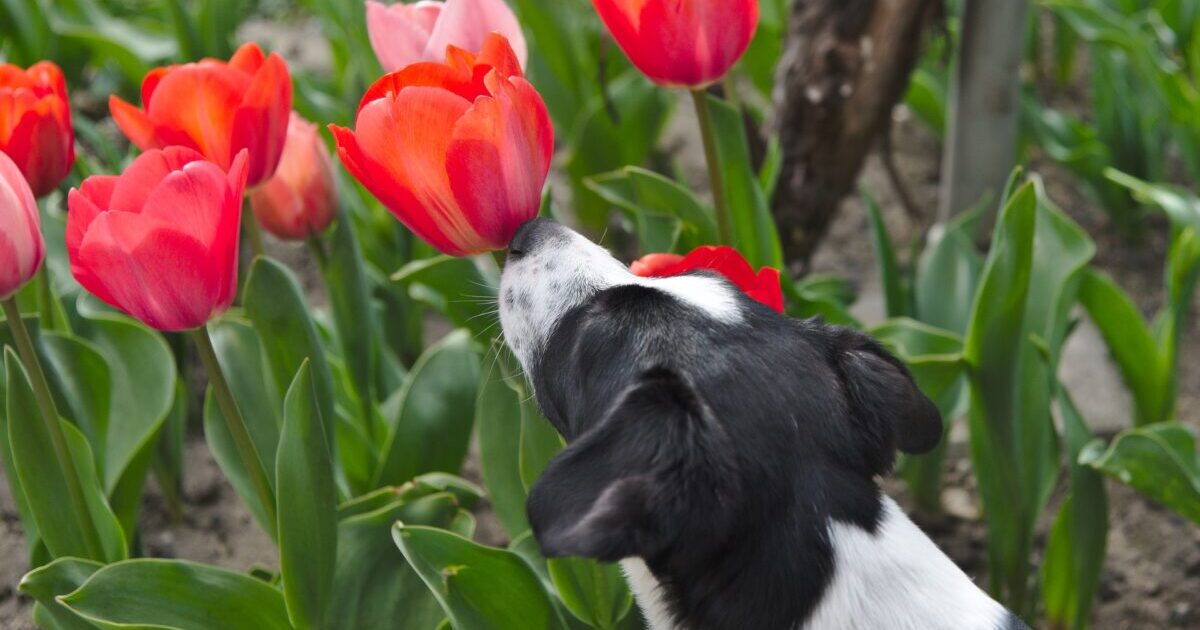
Having fresh flowers in your home or garden can really brighten your day. However, if your dog gets his chompers on certain pretty plants, it can make him really sick. These flowers in particular can be poisonous to your dog if eaten.
Most plants are not overly harmful to dogs when consumed in small quantities. In large quantities though, consuming certain flowers can be fatal. If you know or suspect your dog has consumed one of these potentially toxic flowers, take them to a veterinarian right away. In general, potted plants and floral arrangements should be kept away from your dog’s reach.
1. Tulips
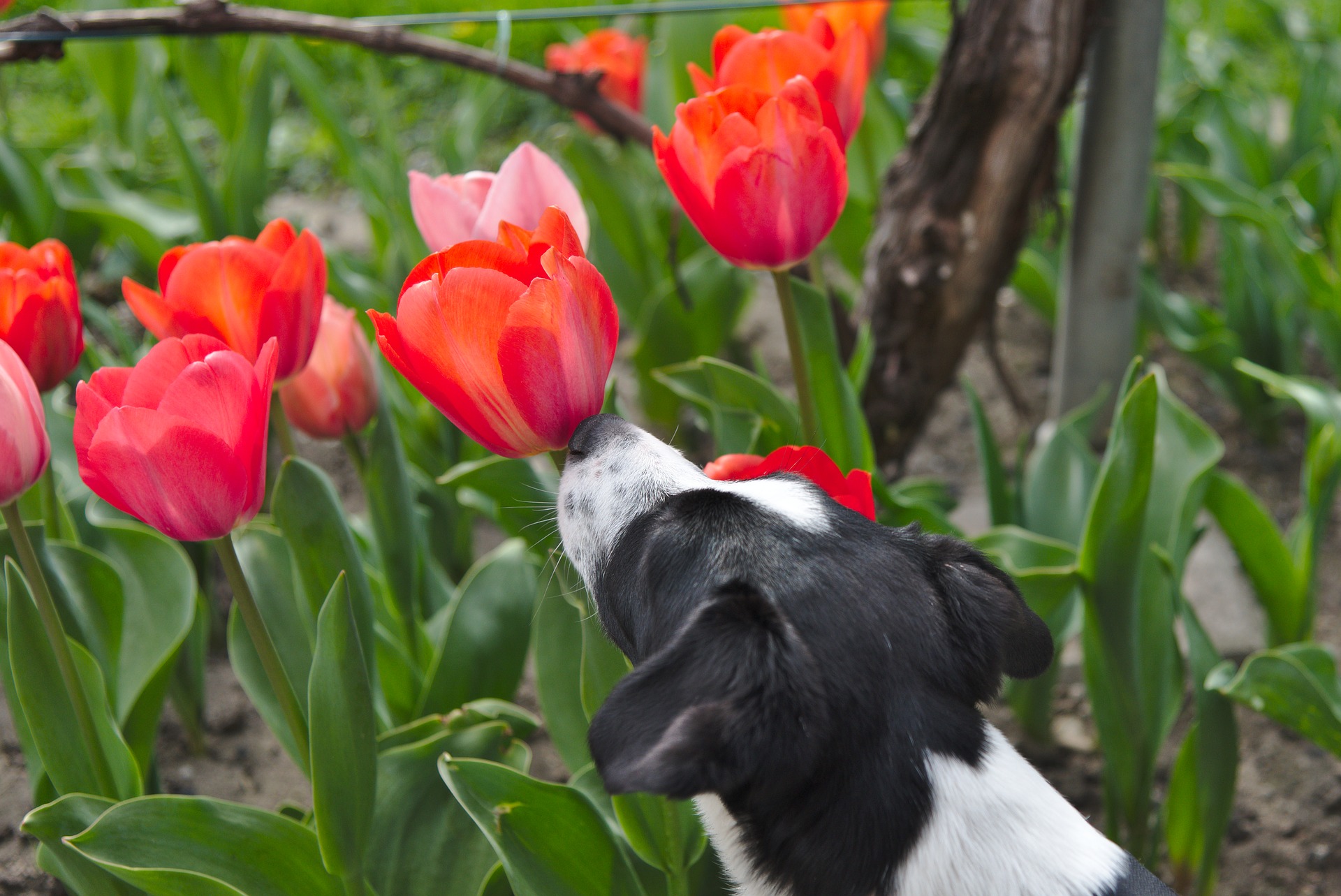
Ever distinct, Tulips make beautiful additions to bouquets and floral arrangements. Your dog may think so too, but chewing on the lance-shaped leaves will likely upset his stomach.
The newly-planted tulip bulbs, however, contain the most toxins. Dogs who eat these bulbs should receive immediate medical attention. Look out for diggers around tulips!
2. Azaleas
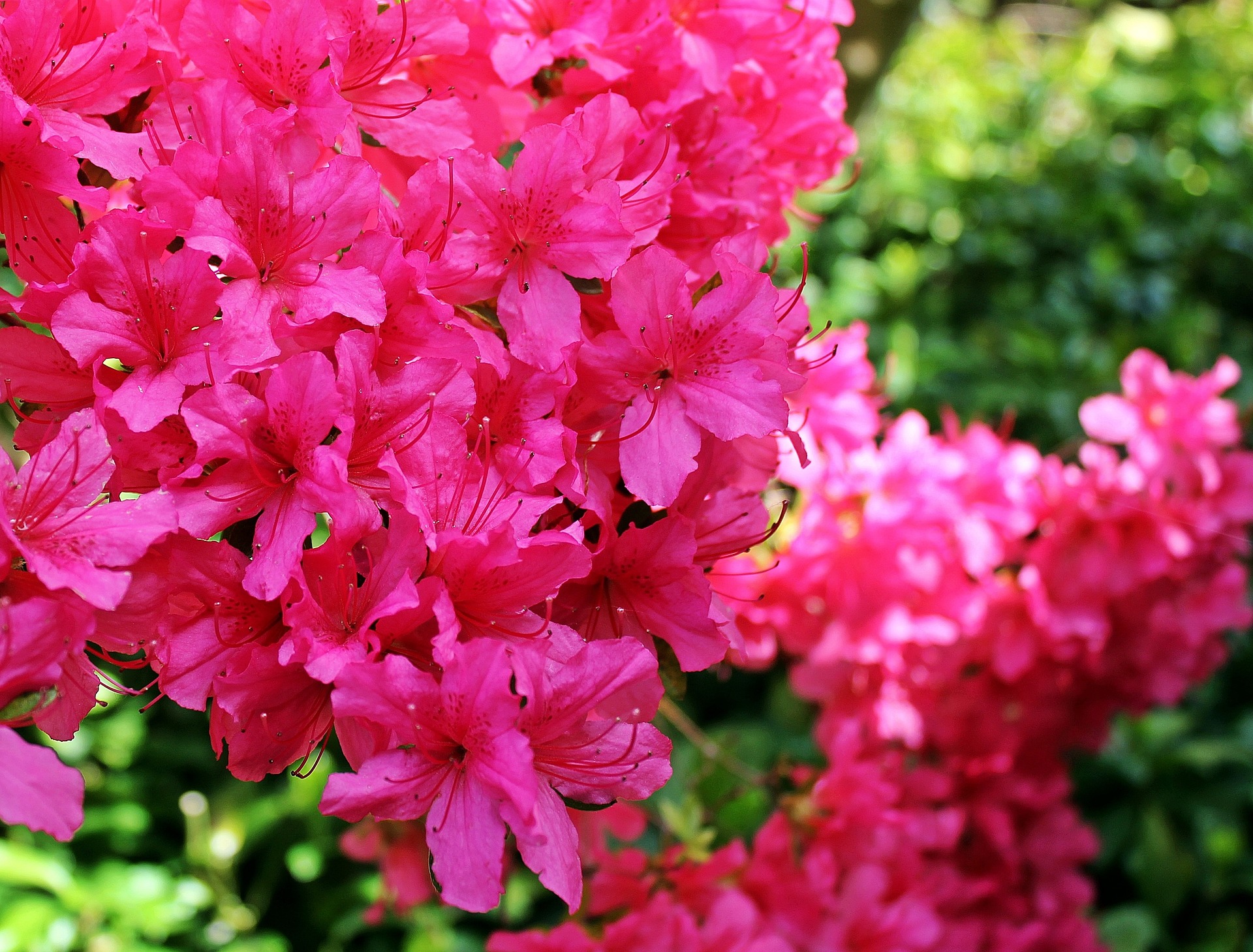
Also known as rhododendrons, these flowers can be fatal if eaten in large enough quantities. In other cases, consumption can lead to difficulty breathing, nausea, and even coma. Keep the pup away!
3. Poinsettias

Often used in Christmas floral displays, these red plants are mildly toxic to dogs. According to Veterinary Emergency Group (VEG) Chief Medical Officer Dr. Lisette Lewis:
“They are not going to die from eating a poinsettia, [but] it’s an irritant to the mouth and stomach.”
Avoid keeping these festive plants on the floor. Place them on hall tables or atop mantles so your dog can’t get to them.
4. Hyacinths
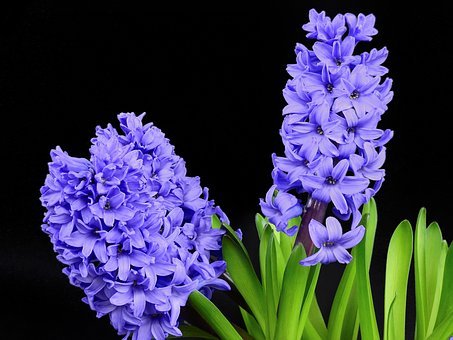
Similar to tulips, the bulbs are the most dangerous part. The crystals found on the outer layer of hyacinth bulbs can irritate your dog’s mouth and lead to excessive drooling. Full ingestion of the bulb can severely impact their gastrointestinal system, and can even cause cardiac arrhythmias and respiratory depression.
5. Daffodils
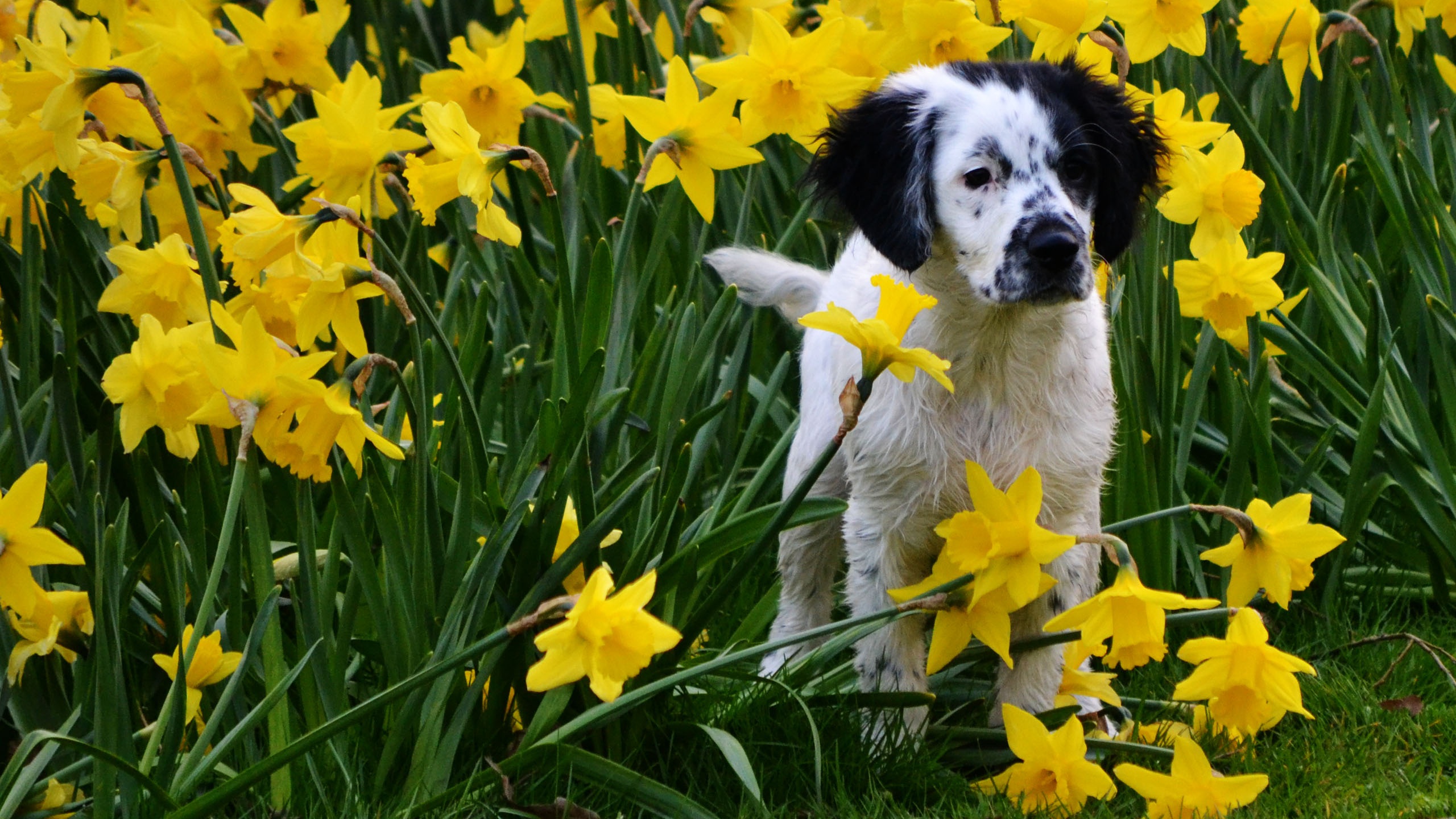
These bright yellow flowers contain lycorine, an alkaloid that can make your dog vomit. Consequences are similar to those of hyacinths and tulips, ranging from nausea to potential breathing and heart problems.
6. Daisies

While some daisies are not toxic at all, certain kinds can harm your dog if he eats too much. Warning signs include vomiting, excessive drooling, and muscle spasms.
7. Lily Of The Valley
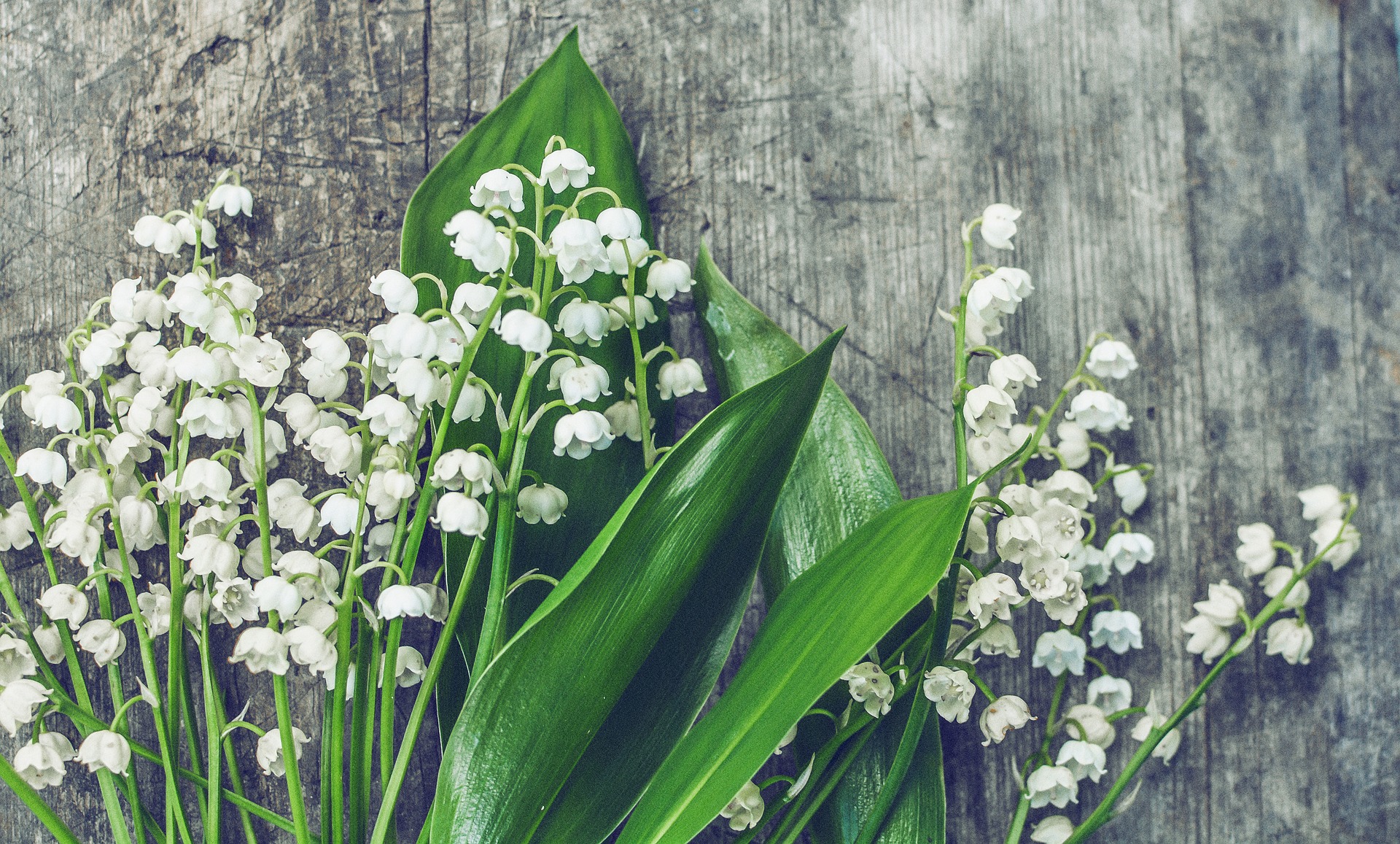
Because Lily of the Valley contains glycosides, eating some of this extremely common flower can affect a dog’s heart and blood pressure. Laura Stern, DVM, DABVT, director of client programs for the ASPCA Animal Poison Control Center, warns:
“Even a small exposure to any part of the plant can cause heart problems for dogs—changes in heart rate and rhythm.”
Swallowing the leaves or bulbs can also make your dog vomit, and they might experience disorientation, seizures, or even a coma.
8. Sago Palm
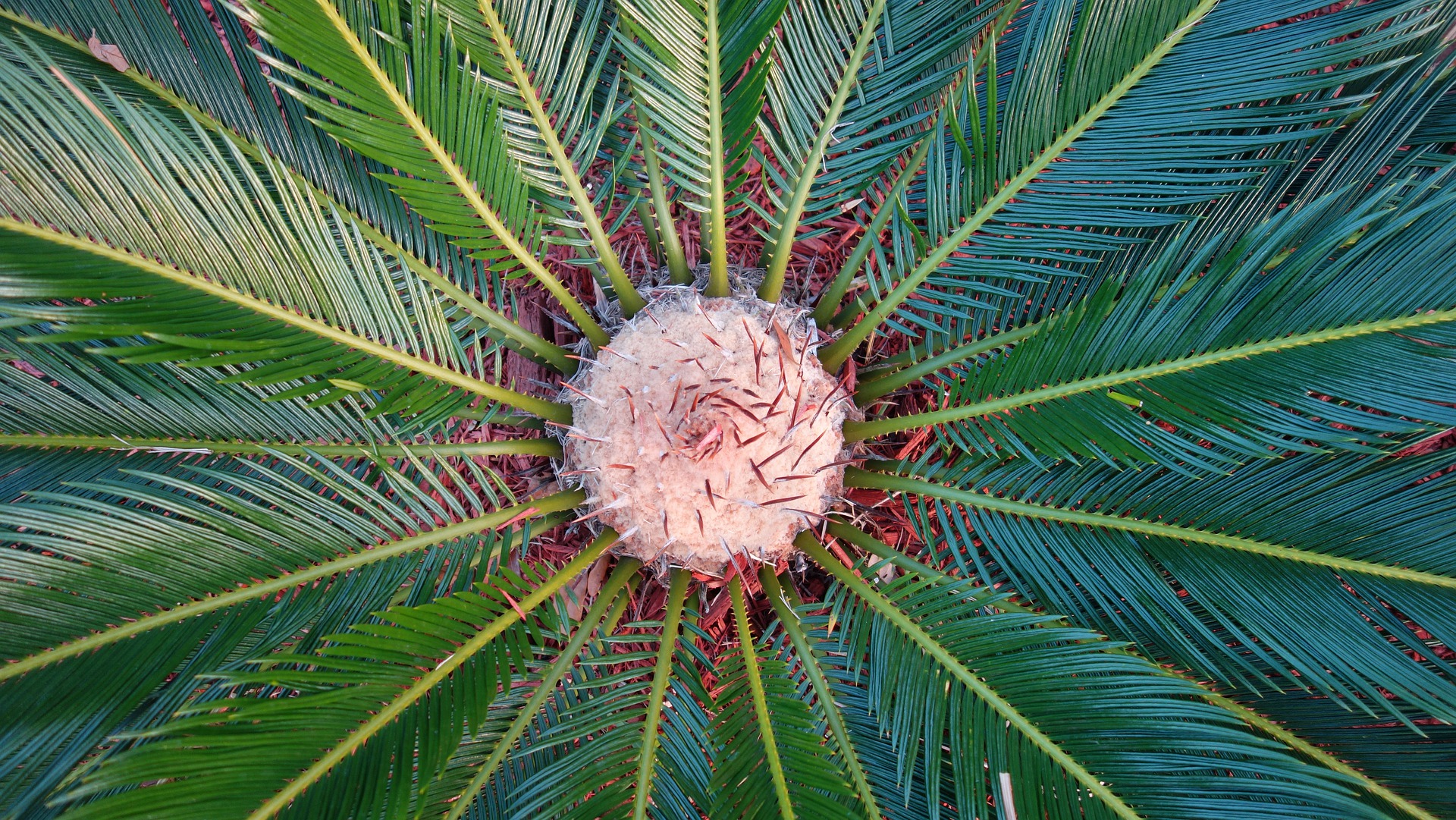
Though they make for beautiful decorations, these plants are especially poisonous to dogs. The seeds contain toxins that can potentially lead to liver failure in dogs. Seeking help right away is vital if your dog eats this plant. They’re more common in the southern U.S. states.
9. Chrysanthemums
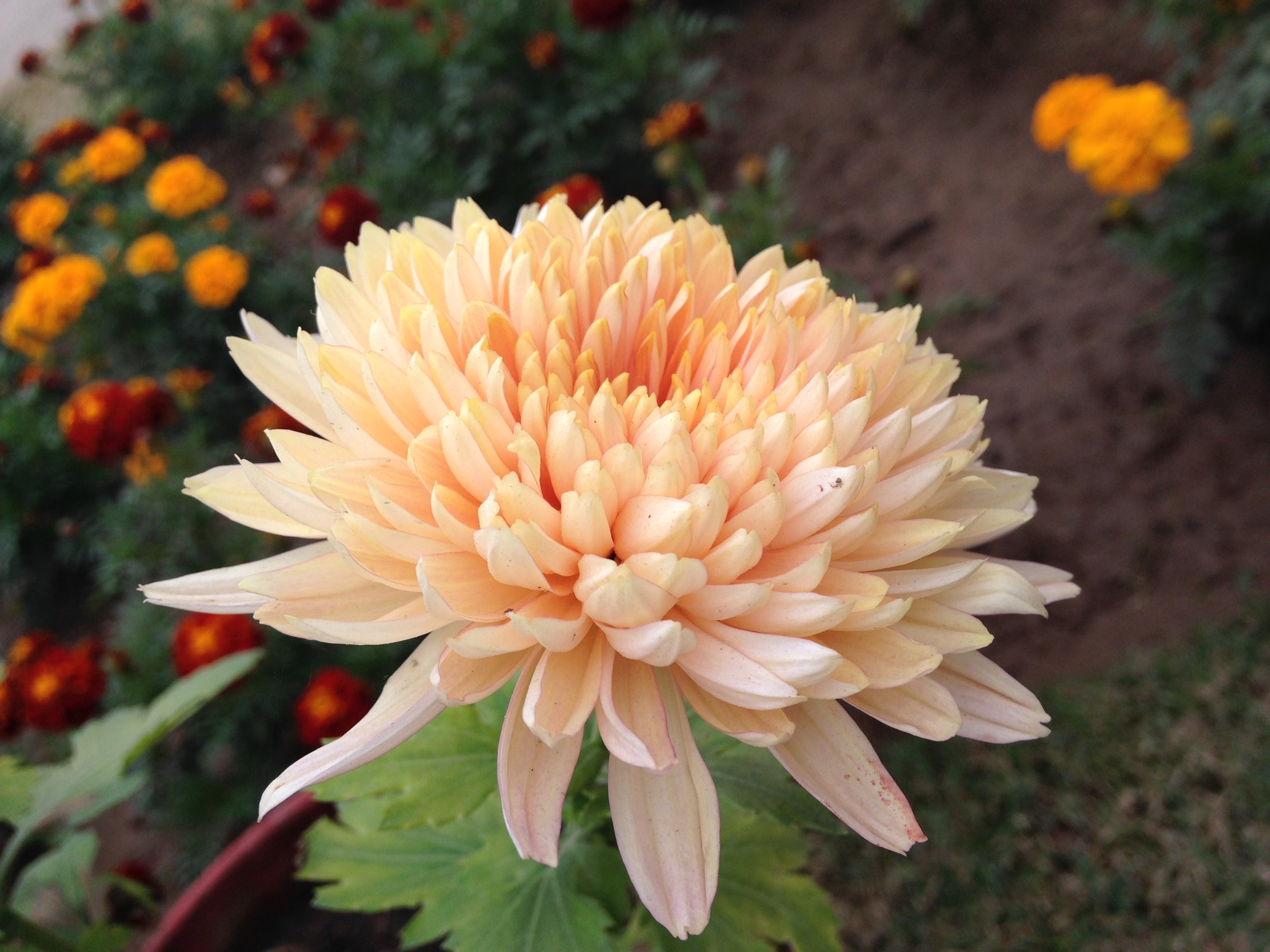
This common garden flower belonging to the daisy family is toxic to dogs, cats, and horses. Signs of chrysanthemum poisoning include vomiting, diarrhea, poor coordination, and dermatitis.
10. Oleander
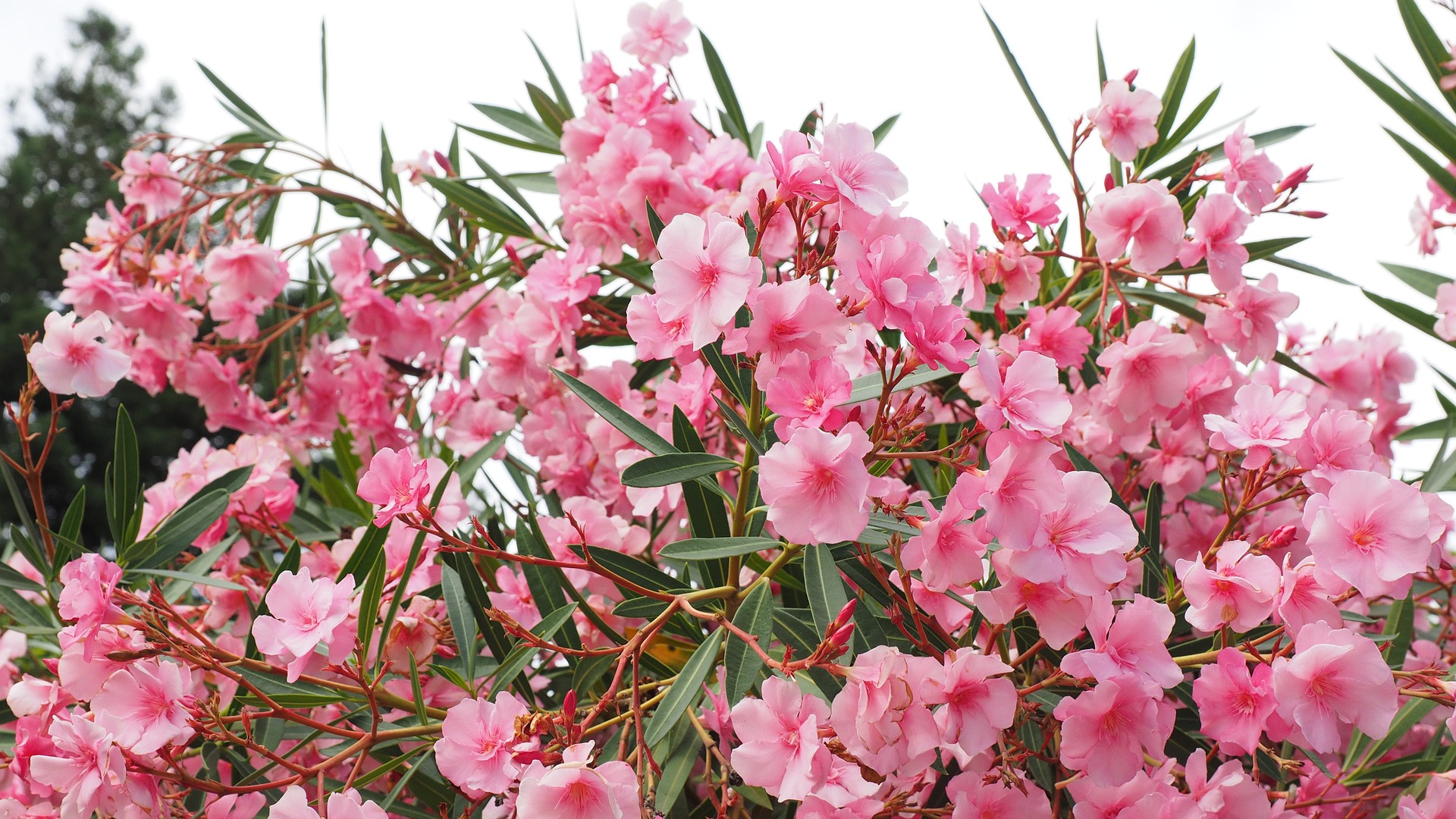
Every part of this common ornamental shrub is toxic to both humans and dogs (so don’t get any ideas!) Dr. Stern explains:
“Like lily of the valley, oleander also contains cardiac glycosides. We can see changes in heart rate and heart rhythm as well.”
Dogs who ingest the flowers or leaves may experience extreme vomiting, an abnormal heart rate, and even in extreme cases, death. Some other signs your dog has consumed oleander might include tremors, drooling, seizures, and weakness. Don’t wait to act when you see these signs! Take your dog to a vet right away.
Identifying The Flowers Toxic To Dogs
If you don’t see a flower you’re curious about on this list, check the ASPCA’s guide to toxic and non-toxic plants. If you only have a visual of a specific flower and don’t know whether it’s harmful, check out this wildflower identification tool.
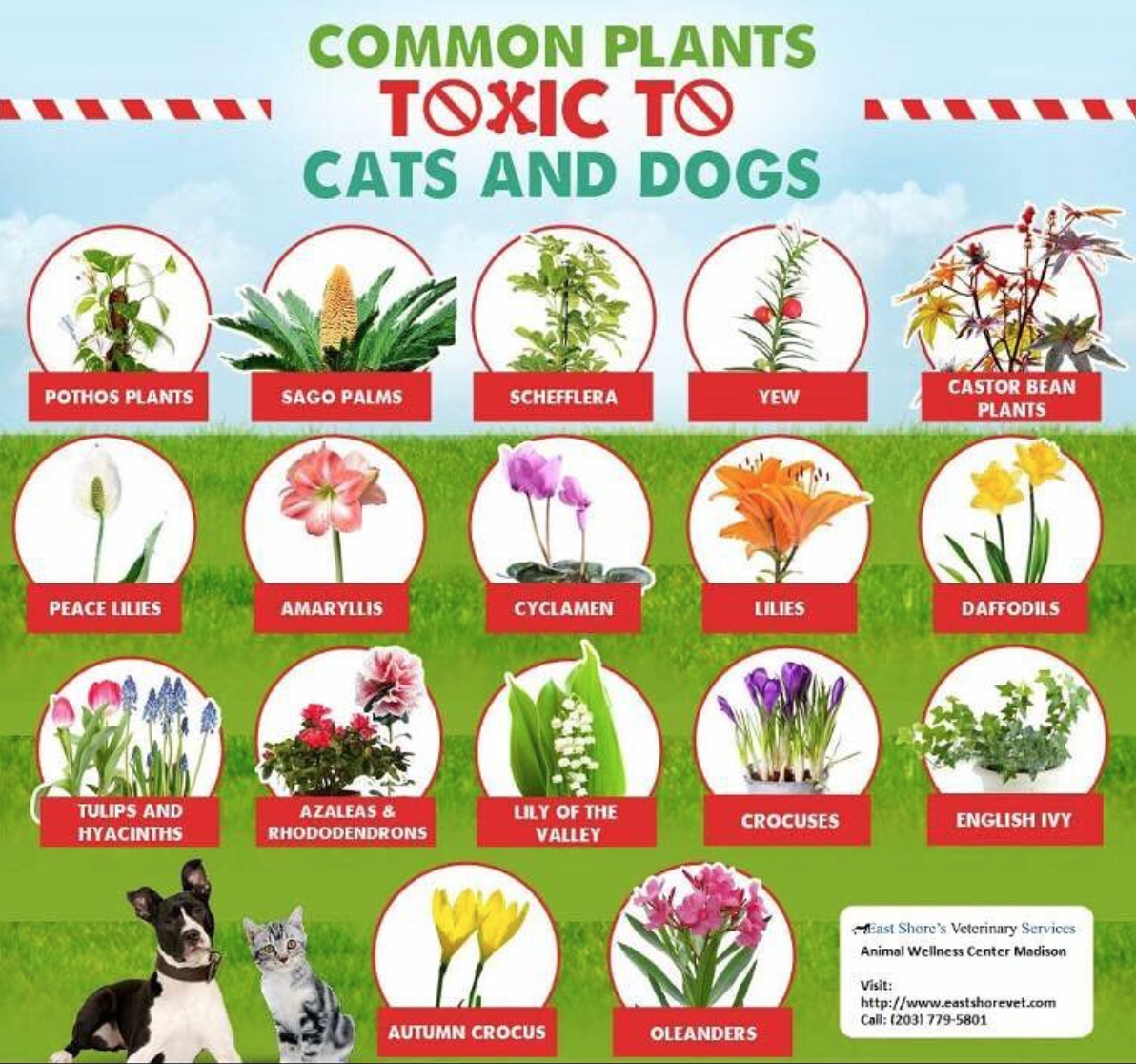
Any other questions or concerns you have should be directed to a veterinarian. Your pal’s life isn’t worth the risk! You can also contact Pet Poison Helpline at 855-764-7661 or ASPCA Animal Poison Control at (888) 426-4435.
Other Dangers From Dogs Eating Flowers
In addition to the toxic flowers themselves, consuming these plants can pose other dangers for your dog.
- Pesticides. No one wants insects destroying their plants, but even worse is a dog accidentally encountering pesticides. These toxins can cause respiratory issues, eye irritation, skin rashes, and nausea/vomiting in your dog.
- Sap. Some sticky tree saps can make your dog throw up or cause blockage in their system. Occasionally sap gets on their fur and when they lick themselves, they get the sap in their system.
- Insect By-Products Like Honey. Occasionally, honey made from certain plants and flowers can itself be toxic. You never know what creature came into contact with a flower before your dog did.
- Extraneous Leaves, Seeds, And Berries. Especially if your dog encounters the flowers outside, there may be bits from trees and other vegetation on them. Some seeds and tree leaves are toxic to dogs.
Keeping Your Dog Safe
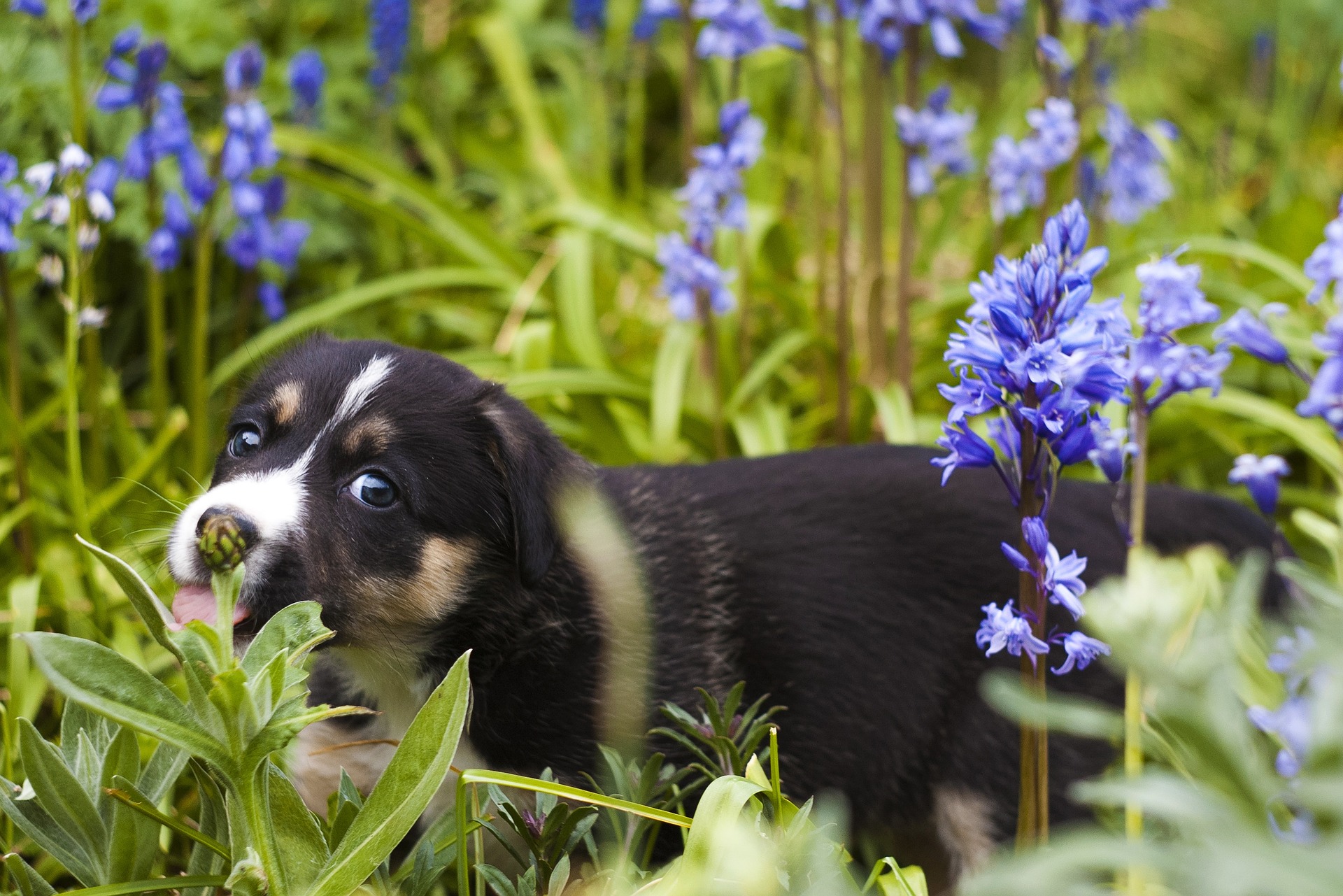
Of course, our dogs can be very sneaky when it comes to eating things they shouldn’t, but there are still ways you can keep them from getting sick.
- Surround gardens with chicken wire and invest in high or secure planters and lifted pots for indoor plants.
- Always keep an eye on your dog when leashed, and tug them away from any plants they linger on.
- Use spices or citrus scents near gardens or on plants. Dogs hate the scents!
- When it comes to indoor plants, everyone wants to see a little bit of green. Here’s a list of dog-safe houseplants to invest in and get that floral fix!
- If vomiting, drooling, diarrhea, or breathing issues are severe, act fast. Take your dog to the veterinarian or nearest emergency animal hospital right away.
Why Does My Dog Eat Flowers?
There are plenty of reasons to explain this silly behavior, ranging from totally benign to concerning.
- Boredom! Dogs play and express things with their mouths and paws. Your dog may enjoy chewing a flower to pieces when there’s no toy around.
- They Just Like The Taste. No, that’s not the most satisfying answer, but who can explain an individual’s preferences?
- Nausea/Gas. Sometimes dogs will chew grass or other plants to alleviate nausea or induce vomiting to feel better. If you notice your dog continually attempting to eat flowers and plants, consult a vet.
- Nutritional Deficiency. If a dog isn’t getting sufficient nutrients from their diet, they may attempt to seek those nutrients out elsewhere, like in plants. Make sure your dog’s food is nutritious and that they eat a balanced diet.
As usual, none of the information here is a substitute for veterinary advice. Always seek medical attention for your dog if you detect poisoning symptoms. Attempting to induce vomiting at home can be unsafe.
The post 10 Common Flowers Poisonous To Dogs And How To Spot Them appeared first on iHeartDogs.com.
via Whisker Therapy